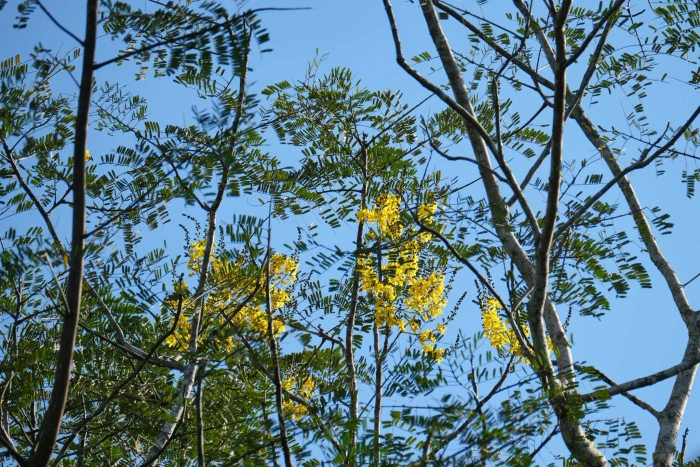Brazilian Firetree
(Schizolobium parahyba)
Brazilian Firetree (Schizolobium parahyba)
/
/

Shawn O'Donnell
CC BY 4.0
Image By:
Shawn O'Donnell
Recorded By:
Copyright:
CC BY 4.0
Copyright Notice:
Photo by: Shawn O'Donnell | License Type: CC BY 4.0 | License URL: http://creativecommons.org/licenses/by/4.0/ | Rights Holder: Shawn O'Donnell | Publisher: iNaturalist | Date Created: 2023-01-24T15:54:07-08:00 |

























Estimated Native Range
Climate Requirements for Marion, Iowa
| This Plant | Your Site | Plant Suitability for Your Location | ||
|---|---|---|---|---|
| • Precipitation | 13" - 266" | 36" | Aquatic | Aquatic |
| • High Temp. | 63°F - 108°F | 86°F | Your summer temperatures are normal for this plant. | Excellent |
| • Low Temp. | 33°F - 74°F | 9°F | Your winter temperatures may be too cold for this plant | Too cold |
This plant should grow well at your location with about N inches per year (Y minutes per month) of irrigation.
Summary
Schizolobium parahyba, commonly known as Brazilian firetree, is a fast-growing deciduous tree native to the tropical rainforests of Central and South America, particularly Brazil. It is renowned for its rapid growth, often reaching heights of 98 feet (30 meters) within five years. The tree typically exhibits a straight, cylindrical trunk with smooth, gray bark and a sparse, open crown. The large bipinnate leaves are fern-like, contributing to its distinctive appearance. From October to December, it produces showy, bright yellow flowers that are highly ornamental, adding to its appeal in cultivation.
The Brazilian firetree is valued for its rapid growth and versatility in use. Its wood is lightweight and used for making toys, boxes, and laminated wood products. In its native habitat, it is found in open and semi-open areas, often in secondary forests that have been disturbed. It is also used in reforestation projects and urban landscaping due to its fast growth and attractive foliage. The tree requires full sun and well-drained soils to thrive, and it is relatively drought-tolerant once established. While it is not known for significant disease problems, it can be susceptible to root rot if planted in poorly drained soils. Additionally, its rapid growth can lead to weak wood that may break in high winds. The tree’s traditional medicinal use as a snakebite antidote is an interesting aspect of its cultural significance.CC BY-SA 4.0
The Brazilian firetree is valued for its rapid growth and versatility in use. Its wood is lightweight and used for making toys, boxes, and laminated wood products. In its native habitat, it is found in open and semi-open areas, often in secondary forests that have been disturbed. It is also used in reforestation projects and urban landscaping due to its fast growth and attractive foliage. The tree requires full sun and well-drained soils to thrive, and it is relatively drought-tolerant once established. While it is not known for significant disease problems, it can be susceptible to root rot if planted in poorly drained soils. Additionally, its rapid growth can lead to weak wood that may break in high winds. The tree’s traditional medicinal use as a snakebite antidote is an interesting aspect of its cultural significance.CC BY-SA 4.0
Plant Description
- Plant Type: Tree
- Height: 20-80 feet
- Width: 20-40 feet
- Growth Rate: Rapid
- Flower Color: Yellow
- Flowering Season: Spring, Summer
- Leaf Retention: Deciduous
Growth Requirements
- Sun: Full Sun
- Water: High
- Drainage: Fast
Common Uses
Bird Garden, Potted Plant, Showy Flowers
Natural Habitat
Native to tropical rainforests and secondary forests of Central and South America
Other Names
Common Names: Yellow Jacaranda, Guapiruvu, Parica, Tower Tree
Scientific Names: Schizolobium parahyba, Caesalpinia parahyba, Cassia parahyba, Schizolobium amazonicum, Schizolobium amazonicum, Schizolobium excelsum, Schizolobium excelsum var. amazonicum, Schizolobium excelsum var. amazonicum, Schizolobium glutinosum
GBIF Accepted Name: Schizolobium parahyba